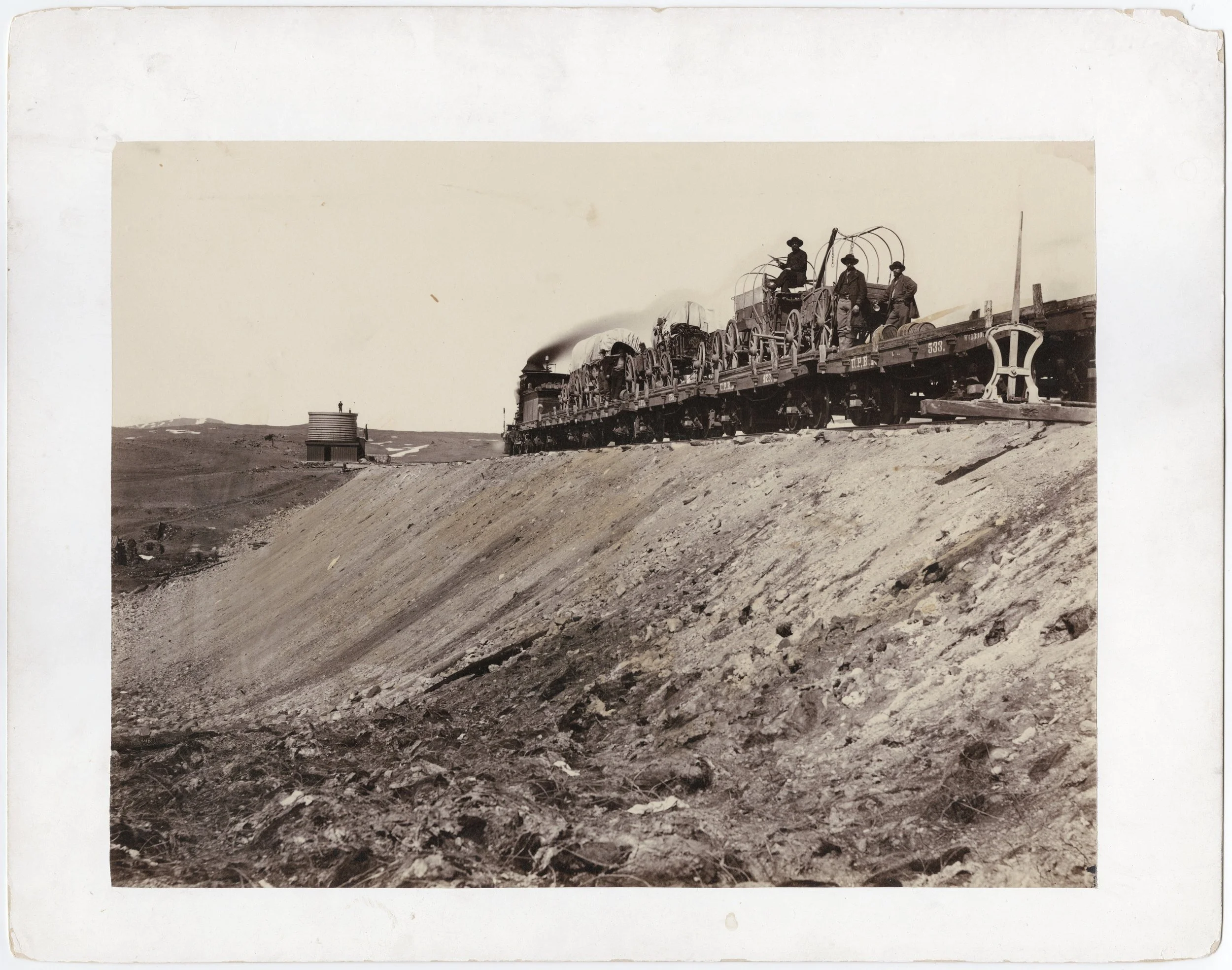The Railroad Comes to Laramie
What day did the first train come to Laramie? Certainly it was in May of 1868, but historians like dates, and this one is not hard to pin down.
Jane Ivinson wrote 31 years later that she and her family were on the first Union Pacific Railroad (UPRR) train into Laramie on May 10, 1868. Many historians believe that train might have been the first passenger train; the first one was probably a freight or work train.
However, despite these and other accounts that give still different dates, contemporary newspaper articles provide the most accurate information. Both the Cheyenne Leader and Frontier Index (published in Laramie at the time) reported on May 5, 1868 that the mayor of Cheyenne and a party of businessmen took the train to Laramie the day before to see what opportunities could be had in the Gem City. This clearly indicates the rails arrived in Laramie on May 4
Jack Casement, the contractor building the railroad, wrote to his wife Frances on May 2, 1868 indicating the tracks were already near Fort Sanders, about four miles south of where Laramie City was staked out. The tracks could have reached Laramie in two days since crews had prepared the roadbed in late 1867. Another letter written to his wife on May 8, 1868 noted that the rails were already well north of Laramie. Taken together, it is clear that the railroad came to Laramie on May 4, 1868.
Passengers on that first train were not the first settlers, however. Well before the first train, people were living along Elizabeth Creek (now called Spring Creek) in tents and crude huts made of ties and lumber. It was an unorganized jumble, mainly serving the needs of the small army post, Fort Sanders, just to the south.
The UPRR had reached Cheyenne in November 1867. Bad weather that winter prevented laying track much further west. Early in the spring of 1868, track laying resumed. The Cheyenne papers reported that the Dale Creek Bridge, a major impediment toward westward progress, had tracks laid across it on April 21. There were several big spring snow storms that interrupted plans as the railroad pushed on toward Laramie.
UPRR chief engineer Grenville Dodge laid out the town in July 1867. The company started work in the Laramie area as early as November 1867 when the workers started preparing the road bed for the main line through the location that was to become Laramie. Teamsters used horses and wagons to bring thousands of tons of rock from a quarry at Miser, Wyoming (which no longer exists) about 40 miles north. They brought the rock which would later be used for the roundhouse, warehouses, machine shop, and the powerhouse.
The UPRR workmen used local lumber for much of the building construction, building the track and powering the locomotives. The lumber was brought from the saw mills in the hills east and west of the town and was used to build the depot (the main meeting spot in the city) office buildings, the UPRR hospital, water tanks, wind mills, freight house and some homes. Supplying ties for the tracks and timbers for the bridges was a huge business. In 1868 alone, several hundred thousand trees in the forests were cut just for ties for the approaching tracks. Additionally, over one hundred thousand cords of wood were burned to generate steam for locomotives through the spring and summer of that year. As a result, large parts of the forest east of town literally disappeared.
All buildings related to the railroad had been planned just before the rails reached Laramie, though not all were finished. Track laying crews wasted no time and pressed on to the next station stop, the now-abandoned town, curiously named Wyoming, 15 miles north.
By Kim Viner and Jerry Hansen
Caption: Laramie's UPRR shops in 1868. The other photo shows a train at Granite Canyon on its way to Laramie. Photos courtesy Library of Congress.
A fill on the way to Laramie.
The UPRR had to cross Dale Creek before moving on to Laramie. The first locomotive crossed on April 21, 1868.


